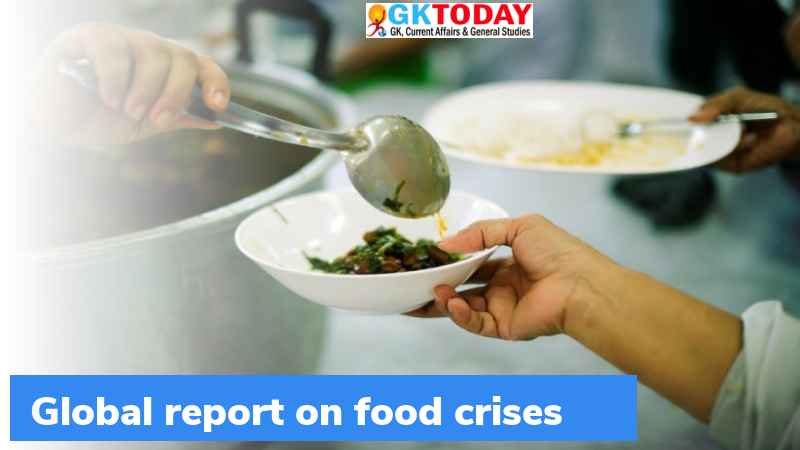GNAFC’s Global report on food crises
The Global Network Against Food Crises (GNAFC) recently released the “2021 Global Report on Food Crises”. The GNAFC is an international alliance formed by the European Union, United Nations and other governmental and non-governmental agencies.
The report says that economic crisis was the major reason to push 40 million people towards hunger in 2020. This has increased by 24 million as compared to that of 2019.
Key Findings of the report
- The conflicts, extreme weather and economic shocks related to COVID-19 are pushing millions of people into food insecurity.
- According to the report, more than 155 million people experienced acute food insecurity in 2020. This has increased by 20 million as compared to that of 2019. Of this, 133,000 people are under the most severe phase of food insecurity. They are mostly from Burkina Faso, Yemen and South Sudan.
- More than 28 million people faced emergency level food insecurity in 2020. Emergency level means they were one step away from starvation. Urgent actions prevented famine spreading.
- Between 2016 and 2020, the population affected by food insecurity had increased from 94million to 147 million.
- Around 75 million children were stunted globally and 15 million were wasted.
- Two out of three people facing food insecurity were from African continent.
Africa
- Africa is the most affected continent due to food shortages. More than 63% of global food shortage cases are from Africa.
- Zimbabwe and Haiti were hit by climate issues that affected food security of 15 million people.
Way Forward
With the global population reaching 8.5 billion by 2030, it is important to make food distribution more equitable.
Month: Current Affairs - May, 2021


